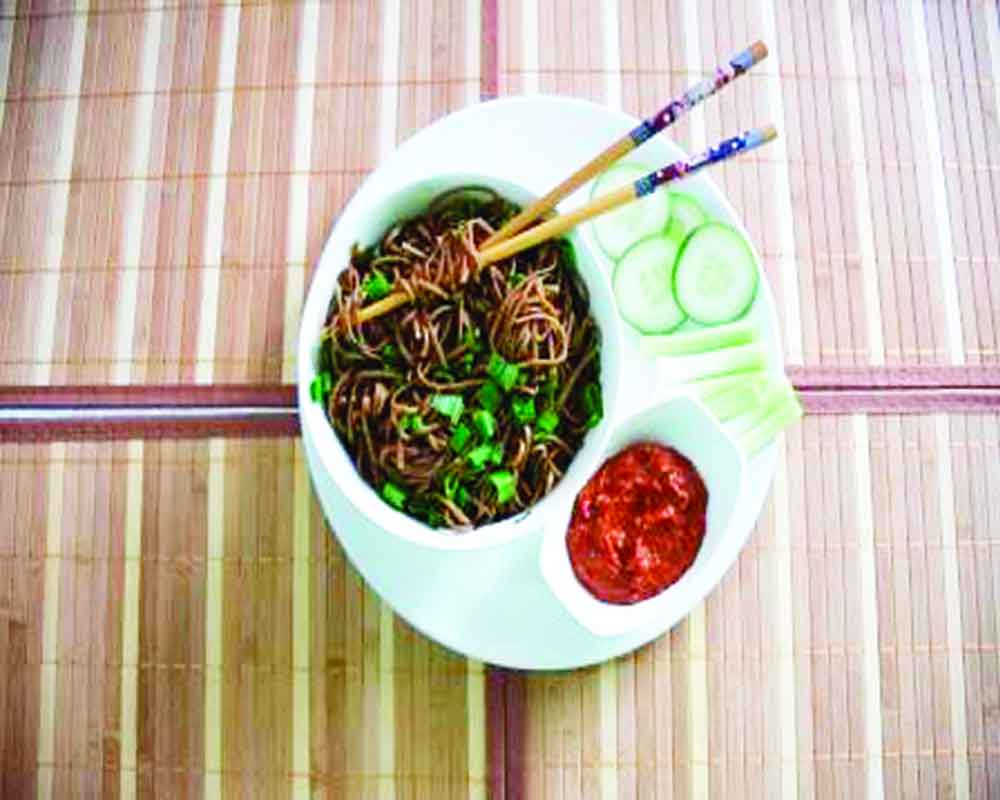While exploring the hacks of Arunachali cuisine, chef Sanjay discovers that it doesn’t use any spices for enhancing taste but rather lets natural ingredients lend flavours to the dish. By Chahak Mittal
The spread on offer is special on several counts. Not even a single dish is cooked in oil. Most of them are steamed. The ingredients, like turmeric and bamboo shoot, are organic and freshly sourced from Arunachal Pradesh. The chefs have used leaves like banana and poto (a native leaf), which is good for controlling blood pressure. While most of the dishes in the buffet are non-vegetarian, there is a special section dedicated to the vegetarians.
Executive chef Sanjay’s Arunachali cuisine festival at Hotel Ashoka lays out a meal for the city’s food connoisseurs from the north-eastern state. For somebody, who specialises in Awadhi at The Oudh, it was an experience preparing the spread. He says, “Initially, we were a bit hesitant because Arunachali cuisine was absolutely new. We didn’t know what it would taste like. But once we started the process, we learnt some new recipes and its nuskhas (tricks). We realised that it’s a very healthy cuisine. No oil, steamed dishes and organic ingredients from the state set it apart as do the native leaves, which are quite rich in iron.”
Chef Sanjay points out that understanding the nuances of this cuisine surprisingly turned out to be easy for him. “That happened only when I actually started cooking the dishes. The transition was smooth. I realised that in Arunachali food, there’s a special emphasis on bringing out the flavours of the ingredients. Extra spices are not added for flavour,” he says and explains further with an example. “If you are preparing bamboo shoot, the speciality of that dish would be that its original flavour will be kept intact. No masala would be added to it to impart a spicy taste. If we are using an Arunachali leaf, no other ingredient is used to dominate the original essence of the dish,” he adds.
There are several dishes in the buffet which are prepared using bamboo shoot since it has a delicate flavour and is a chief component of the food in the state. Chef Sanjay enjoyed cooking Khawlam, which is a dish of steamed rice in fresh green bamboo, the most. The dish, he tells us, is prepared by the Khamti tribals using a long hollowed out bamboo stick which is stuffed with plain rice. The stick is then heated on coal fire, and the natural flavour of bamboo seeps into the rice. The chef says he would even like to call it his signature dish now since he has learnt it so well. The only variation being that he would stuff “chicken” instead of rice now, “especially keeping North Indians in mind,” he says and laughs.
Talking about other commonly-used ingredients in the state, he explains, “Nobody uses spices in Arunachal Pradesh. There, they only use ginger, a lot of garlic and chilli to enhance taste. We must understand that there is not much variety in the local produce. In the same way, we have also prepared the Aating, which is local rice wrapped and steamed in wild leaves. Banana leaves can be used in their place. Even here, no spices are mixed in rice as the dish gets permeated with the natural flavour from the leaf.”
North Indian cuisine is known for its tadkas and a number of spices it uses. Did chef Sanjay, being a north Indian, bring any variation in the dishes to help people in the city relate with the cuisine better? He says, “Here, most of the people like it spicy and tangy. A number of flavours like ginger, garlic, clove, cardamom and various kinds of chilli and pepper can be found here. However, Arunachal has nothing of this sort. They might use cardamom leaves to wrap the chicken and meat. They only use the Bhut jolokia chilli, which is the hottest in the world. We have tried to include it in the menu to suit the palate of North Indians while staying true to the flavours of Arunachal.”
Puta, a famous dish in Monpa (an ethnic group in Arunachal) cuisine is made of buckwheat noodles with fermented soya beans and chillies. “It is a meal in itself,” chef says and adds that he has prepared it using the Bhut jolokia.
One is naturally curious if such food festivals have enabled chefs and patrons explore newer cuisines? He feels that it’s actually the other way round. “People have started travelling more, which, in turn, has opened them to the idea of trying out more cuisines and becoming more experimental in their tastes. And people’s extensive travels are the reasons that such food festivals gain so much attention. There are a lot of new cuisines coming in and, with them, equal footfalls too. People really like South Korean and Japanese food now while earlier, nobody knew wasabi and kimchi. I had literally thrown up when I ate sushi for the first time. But now, I have developed a taste for it. Similarly, foodies have started experimenting with bamboo shoot in food which is almost identical to Japanese wasabi due its pungent smell,” he says.
Special chefs from the region along with the chef of ITDC are preparing Arunachali delicacies.


























